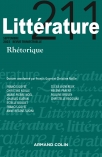
Romantisme n° 172 (2/2016)
Pour acheter ce numéro, contactez-nous
Recevez les numéros de l'année en cours et accédez à l'intégralité des articles en ligne.
En tant qu’ensemble romanesque, La Comédie humaine, dans son ambition de totalisation, se trouve à l’intersection de plusieurs modèles, notamment un modèle qu’on peut qualifier d’encyclopédique, de nature discursive, et un modèle épique, de nature narrative. Après avoir souligné les attendus de ces deux modèles quant à l’organisation d’ensemble du projet balzacien, on s’intéresse à leur interférence dans l’écriture des romans. Le procédé balzacien de la liste de personnages reparaissants s’avère ainsi susceptible de deux lectures complémentaires et divergentes. Le retour des personnages est irréductible à la récurrence du type, et prend une dimension épique. L’entreprise balzacienne de totalisation romanesque se tient au carrefour de deux ambitions : coordonner des discours, unifier un monde.
Considered as a novelistic whole, in its drive towards totalisation, the Comédie humaine (The HumanComedy) is at the intersection of a number ofmodels, among others that between an encyclopaedic model one can call discursive, and an epic one, which can be considered narrative. After having restated the expectations these models lead to as to the organisation of Balzac’s project, this paper looks at the way they interfere with the novels’ writing. The system of recurring characters can thus be read in two complementary but diverging ways. The recurrence of the characters cannot be reduced to a regression to types, and takes on an epic dimension. Balzac’s ambition of totalising the world in a novel is at the crossroads of two urges : coordinating different discursive realities, and giving a world its unity.

